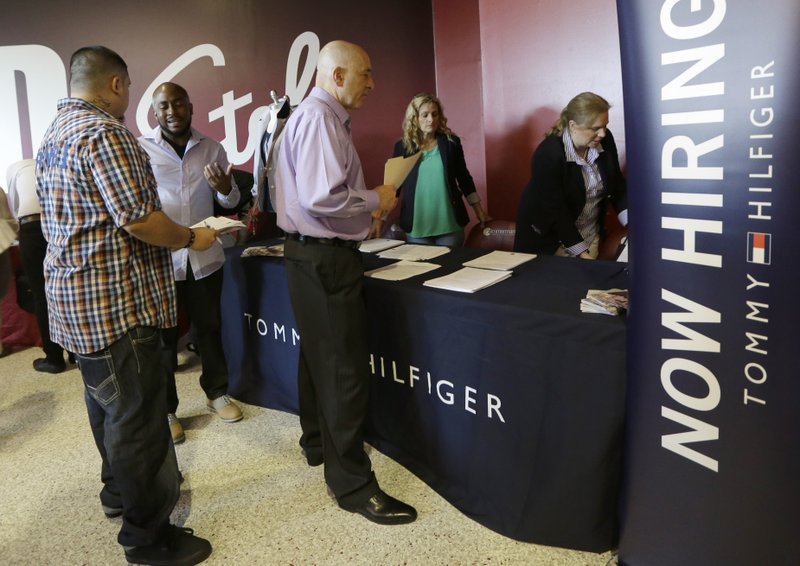WASHINGTON -- The number of Americans applying for unemployment benefits fell for a second-straight week, further evidence of the strength of the labor market.
The Labor Department said Thursday that claims for unemployment benefits last week dropped by 8,000, to a seasonally adjusted 237,000. The less-volatile four-week average rose by 1,000 to 243,000.
Applications for unemployment benefits are a proxy for layoffs. They've come in below 300,000, a historically low figure, for 119 straight weeks, the longest such stretch since 1970. Overall, 1.94 million people were collecting unemployment checks, down 10.2 percent from a year ago.
Various indicators show the job market is healthy even though hiring has slowed lately, partly because employers are having trouble finding workers. The unemployment rate fell in May to a 16-year low of 4.3 percent.
The economy has generated 162,000 jobs a month so far this year -- up from an average of 157,000 a month from January through May last year but down from an average of 187,000 a month for all of 2016.
On Wednesday, the Federal Reserve, noting the strong job market, voted to increase a key interest rate for the third time in six months, pushing its federal funds rate up by a quarter-point to a new range of 1 percent to 1.25 percent. The Fed signaled that it intended to raise rates one more time this year.
An unexpected decline in May factory output after the biggest gain in three years shows U.S. manufacturing is leveling off, Federal Reserve data showed Thursday.
The Fed said factory output fell 0.4 percent in May after a 1.1 percent jump in April that was the largest since February 2014.
Total industrial production, which also includes mines and utilities, was unchanged after a revised 1.1 percent surge that was the strongest in nearly seven years.
Capacity utilization, measuring the amount of a plant that is in use, edged down to 76.6 percent from 76.7 percent.
The report showed factory output dropped for the second time in three months, essentially little changed from February and reflecting broad declines that included less production of motor vehicles, business equipment and construction supplies.
Excluding cars and trucks, factory output also fell for the second time in three months. An acceleration in the near term looks unlikely given the slowdown in the auto industry, which had been a bright spot in recent years. A failure of businesses to accelerate investment -- as they wait for clarity on tax and regulatory reforms -- may also weigh on production.
At the same time, more stable energy prices and steady household spending will help underpin American factories, while improving overseas markets may give a boost to export-oriented production.
Manufacturing in New York state rebounded this month to the highest level since September 2014, another sign of strength for America's factories.
The Federal Reserve Bank of New York said Thursday that its Empire State manufacturing index climbed to 19.8 in June after falling to minus-1 in May. Readings above zero show that factories are expanding.
The new orders index rose to 18.1 after registering minus 4.4 in May. Shipments rose to 22.3 from 10.6 in May. But the pace of hiring slowed: The employment index came in at 7.7, positive but down from 11.9 in May.
The Empire State index only measures sentiment in New York, but economists track it because it provides an early read on factory output nationwide. It has risen seven of the last eight months.
A national manufacturing index from the Institute for Supply Management has registered nine-straight months of growth.
American factories have bounced back from a slump in late 2015 and early 2016 caused by cutbacks in the energy industry, which was reacting to a drop in oil prices, and a strong dollar, which makes U.S. goods costlier in foreign markets.
Information for this article was contributed by Martin Crutsinger and Paul Wiseman of The Associated Press and by Shobhana Chandra of Bloomberg News.
Business on 06/16/2017

